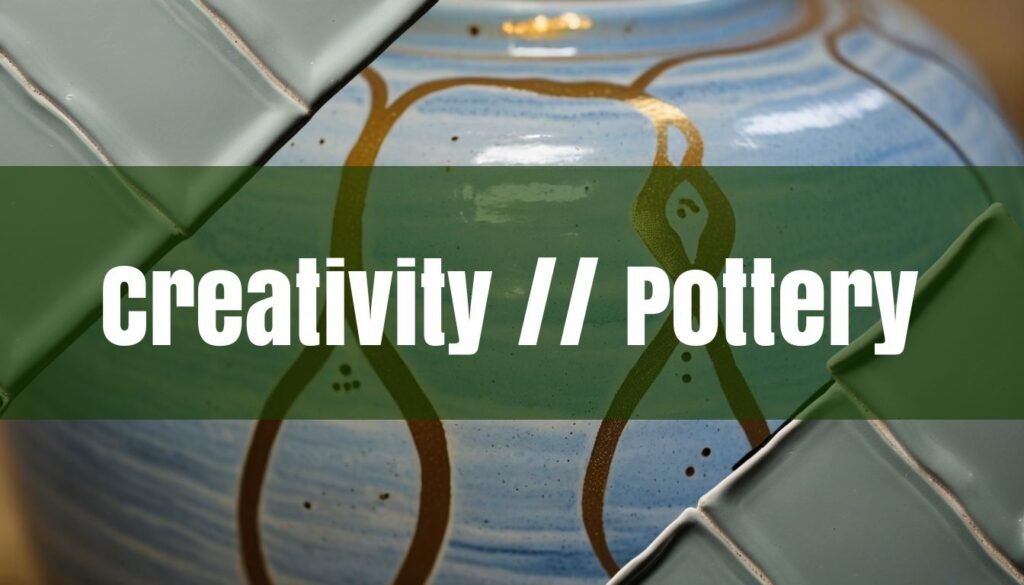What to make with pottery is limited only by imagination and skill, opening up a world of possibilities from functional items to purely decorative pieces. Pottery, at its heart, is the art of shaping clay into desired forms, and the techniques involved are accessible to both beginners and experienced artisans alike. With a few essential tools and materials, one can embark on a creative journey that transforms humble clay into beautiful and practical objects.
Foundational Techniques in Pottery
The foundational techniques in pottery, particularly suitable for beginners, revolve around hand-building. These methods, including pinch pots, coil building, and slab construction, allow you to shape clay with your hands and simple tools. Pinch pottery is often the easiest starting point, involving the sculpting of a ball of clay using your hands. By pressing a thumb into the center of the clay ball and gently pinching the walls between your thumb and fingers, you can create small pots and vessels. Coil pottery, on the other hand, involves creating long, rolled coils of clay and attaching them to a base, building up the form layer by layer. This technique allows for the creation of various shapes and sizes. Slab building is ideal for constructing geometric shapes and more structural builds, where clay is rolled out into flat sheets, which can then be cut, shaped, and joined together. Mastering these three hand-building techniques—pinching, coiling, and slab building—provides a solid foundation for creating almost anything out of clay. For more information, check out mastering hand building pottery.
Choosing the Right Clay
Choosing the right type of clay is paramount for successful pottery projects. The main types of clay commonly used by potters include earthenware, stoneware, porcelain, ball clay, fire clay, and air-dry clay. Earthenware clay, known for its rich, warm colors, is versatile and matures at lower firing temperatures, making it suitable for dinnerware and decorative items. Stoneware clay, durable and versatile, fires at higher temperatures, resulting in a stone-like and resilient material ideal for practical applications such as dinner plates and vases. Porcelain clay, often white, is used to create delicate and translucent pieces but can be more challenging to work with. Ball clay is known for its plasticity and is often mixed with other clays to improve their workability. Fire clay has a high firing range, making it perfect for products requiring resistance to high temperatures. Air-dry clay is unique as it hardens naturally without firing, making it ideal for projects where kiln access is limited. You can also learn more about clay types.
Essential Tools and Equipment
A well-equipped pottery workspace enhances the creative process and allows for greater precision and control. While some projects can be accomplished with minimal tools, certain items are indispensable for serious pottery endeavors. Aprons are essential for protecting clothing from clay and water. Potter’s needles are slender steel tools used for trimming and etching clay. Wire clay cutters are vital for dividing clay and removing pots from the wheel. Fettling knives, with their flexible blades, are used for cutting and shaping clay. Ribs, made of silicone, steel, or wood, are used to smooth and shape clay on the wheel. Sponges are multi-purpose tools for smoothing, cleaning, and absorbing water. Calipers are used to measure the dimensions of pottery pieces, ensuring accurate fits. For those using a pottery wheel, the wheel itself is a central piece of equipment, enabling the creation of symmetrical forms. Additionally, a kiln is necessary for firing pottery to harden the clay and set glazes.
Glazes and Troubleshooting
Glazing is a crucial step in pottery, adding color, texture, and durability to the finished piece. There are numerous glaze recipes and techniques available, allowing potters to achieve a wide range of effects. Commercial glazes are known for their reliability and ease of use, often forgiving slight variations in application or firing temperature. Creating your own pottery glaze allows for greater control over the final appearance, enabling adjustments to glossiness, color, and melting temperature. Common glaze issues include crawling, dunting, and applying the glaze too thickly or thinly. Proper preparation, including wiping off dust and ensuring glazes are well mixed, is essential.
With practice and experimentation, you can master the art of creating your own pottery glaze.
Despite careful preparation, potters may encounter problems such as cracking and warping. Cracks can occur due to improper wedging, which introduces air pockets into the clay. Slow drying is crucial to prevent cracking, and covering pieces with plastic can help regulate the drying process. Additionally, keeping detailed records of materials and processes can aid in troubleshooting and identifying the causes of defects. By understanding the properties of different clays, mastering essential techniques, and learning to troubleshoot common problems, potters can create a wide array of functional and decorative items. The possibilities are endless, from simple pinch pots to intricate slab-built structures, making pottery a rewarding and versatile art form.





